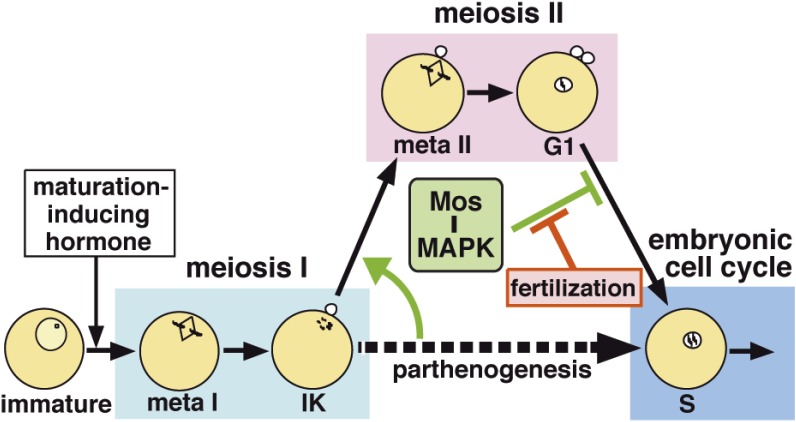Figure 5.
Mos–MAPK signaling ensures the successful transition from meiosis I to II to prevent parthenogenetic activation in starfish oocytes. At the end of meiosis I, the oocyte already has the ability to enter the embryonic mitotic cycle in the absence of fertilization (i.e., parthenogenesis). Mos–MAPK signaling, however, represses this ability in two ways. First, at the end of meiosis I, Mos–MAPK signaling causes swift activation of cyclin B-Cdk1 to force entry into meiosis II without an intervening S-phase. Subsequently, Mos–MAPK signaling prevents return to the embryonic mitotic cycle after the completion of meiosis II, resulting in the suppression of parthenogenesis. Once fertilization occurs, this prevention is cancelled, leading to the start of the embryonic mitotic cycle. Thus, Mos–MAPK signaling halves the ploidy and maintains the haploid state of oocytes until fertilization.

